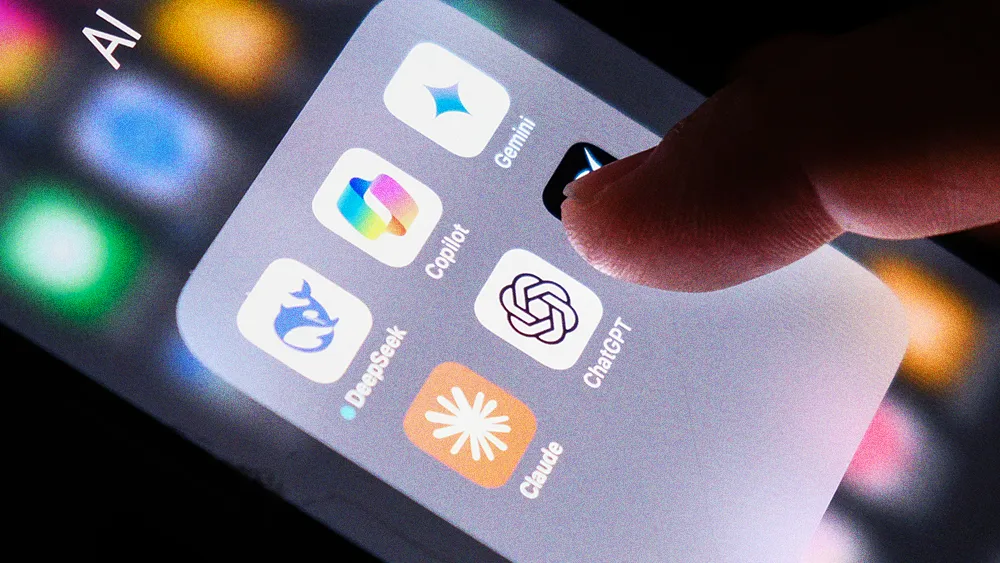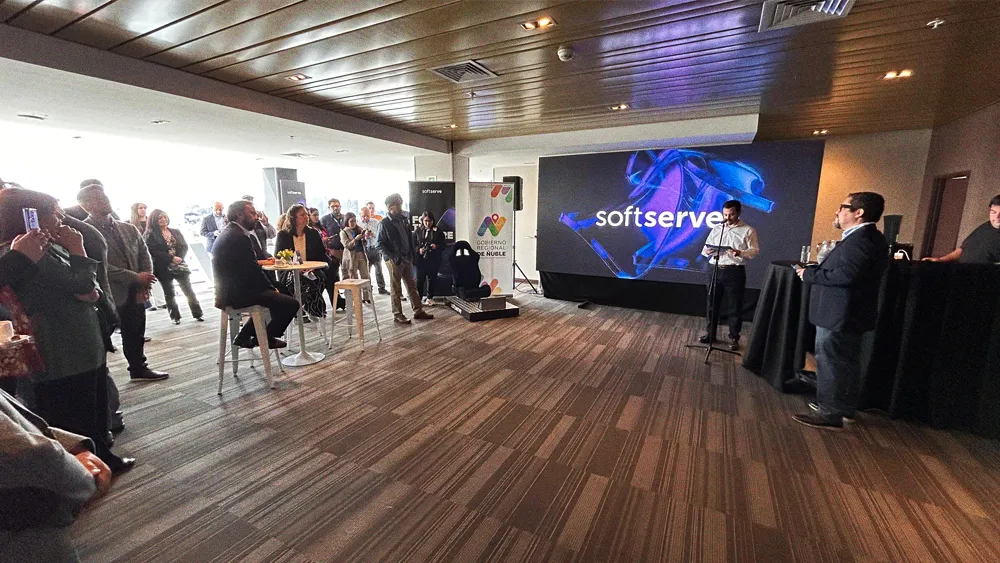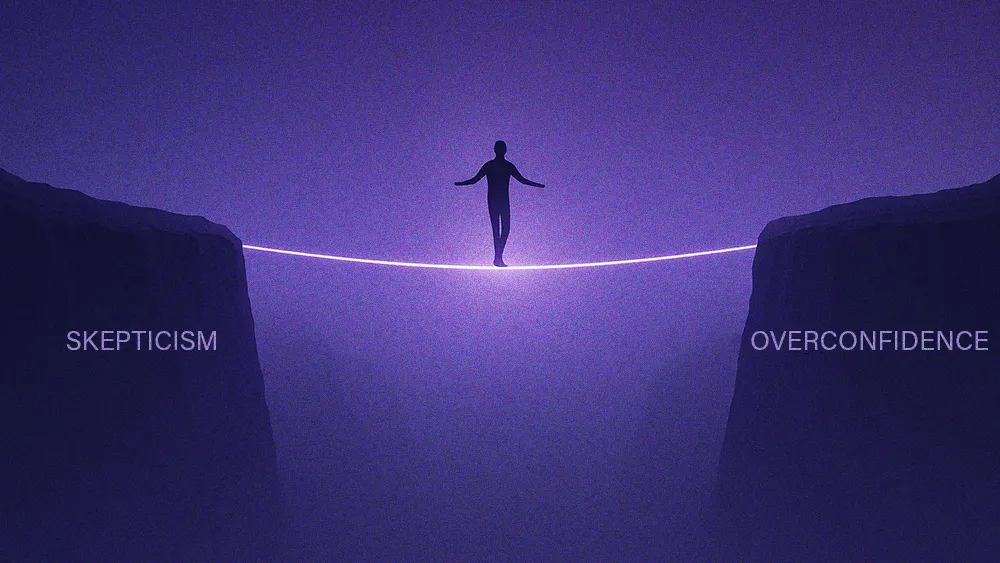Moderna’s AI Academy Leader on building ‘AI fitness’ through curiosity and continuous learning

Key Points
Moderna’s Sr. Director of Digital & Leadership Learning and AI Academy leader, David Porter, advocates for “AI fitness,” focusing on personalized, hands-on learning over standardized training.
AI integration should involve continuous experimentation and learning, treating skeptics as essential partners.
AI tools can track employee progress, offering personalized guidance on their AI learning journey.
Leadership engagement is crucial; leaders must actively participate in AI adoption to effectively guide their teams.
We tell people how it works, but we don't tell people how to use it because we're not the experts in what they do. If you're a scientist in R&D, I don't flatter myself by thinking I know exactly what you do. My focus is to help you get the basics down and give you some ideas and demos, so you can then answer the question, 'I think I could use this to do x, y, and z.' And we can say, 'Let's give that a shot.'

David Porter
Sr. Director of Digital & Leadership Learning
Moderna
The enterprise AI story is too often told in numbers: benchmarks, scores, speed, scale. Companies scramble to upskill, chasing standardized metrics that look good on paper but miss the point—AI isn’t a test to pass. It’s a new way of working. The challenge isn’t hitting a specific target; it’s getting every employee, regardless of their starting point, on a continuous path of improvement.
We spoke with David Porter, Sr. Director of Digital & Leadership Learning at Moderna and a featured expert in a recent report by Coursera and Amazon Web Services. The report, From Cloud to AI: How Tech Leaders Are Investing in Skills Development to Drive Transformation, found that 60% of tech leaders see real-world projects as the most valuable form of training, suggesting a move away from abstract learning toward a culture of hands-on, curiosity-driven experimentation. Porter, drawing on over two decades of experience in learning and development at firms like Zymeworks and SAP Concur, argued that to unlock AI’s true potential, leaders must abandon the one-size-fits-all training model and instead adopt a mindset he calls “AI fitness.”
“The lovely thing about AI fitness is, just like being physically fit, it’s not about where you are right now. It’s about getting you on the path.” For Porter, the journey begins by recognizing that AI is fundamentally different from any previous technology. Unlike learning a program like Excel, where proficiency can be taught in a few hours, AI requires a hands-on, exploratory approach. The goal isn’t to create universal experts, but to empower individuals to become experts in applying AI to their own unique roles.
Empowerment over instruction: “We tell people how it works, but we don’t tell people how to use it because we’re not the experts in what they do. If you’re a scientist in R&D, I don’t flatter myself by thinking I know exactly what you do. My focus is to help you get the basics down and give you some ideas and demos, so you can then answer the question, ‘I think I could use this to do x, y, and z.’ And we can say, ‘Let’s give that a shot.'”
This philosophy reframes the very idea of “risk-free” experimentation. It’s not about a protected sandbox isolated from real work; it’s about adopting the mindset of a scientist, where there is no such thing as failure—only data. Every experiment, whether it confirms a hypothesis or not, generates valuable learning.
Learning from every outcome: “There’s no such thing as a failed experiment or a successful experiment. It’s just data,” Porter stated. “I avoid even calling them ‘failed experiments’ because there’s no such thing in science. There is an experiment, and then there is data.” For him, this mindset is at the heart of AI fitness; progress comes not from perfection, but from the willingness to keep testing, adjusting, and moving forward. “It’s like Nelson Mandela said: you don’t always win, but you always learn. That’s the heart of what we do.”
Building this culture of curiosity requires more than just a philosophical shift; it requires intentionality and a willingness to embrace voices of caution. Porter argued that skeptics are not roadblocks to be overcome but essential partners in ensuring a safe, responsible, and ethical rollout.
Skepticism as an asset: “Skeptics aren’t people to overcome, they’re people to embrace. That voice of reticence is critical to making sure we’re doing things right, bringing everyone along so no one’s left behind, and keeping us safe, responsible, and ethical the entire time. They’re just as important as the people using AI a thousand times a day.”
While a personalized “fitness” journey might seem difficult to track, Porter noted that AI itself provides the solution. By using AI-powered tools to analyze feedback and progress, organizations can create personalized dashboards that guide employees from one milestone to the next.
Tracking the journey: “We have dashboards that feed into not only your training efficacy but also your AI fitness,” he said. “They can say, ‘Here you are on the AI fitness journey. You just passed this milestone. Here’s the next milestone, and here’s the content and examples to get you there.'”
The entire framework, however, can be undermined by common leadership blunders. Porter identified three key pitfalls that can derail an organization’s AI adoption: ignoring the technology, forcing it too aggressively, or treating it as a task to be delegated. This last mistake—a leader who believes AI is for their people, but not for them—is particularly damaging. It creates a cognitive dissonance that models the exact opposite of the hands-on curiosity required. It circles back to the core principle of AI fitness: you cannot lead people on a journey you refuse to take yourself. Just as you can’t force a novice to run a marathon, you can’t expect teams to embrace a new way of working when their leaders remain on the sidelines.
Skeptics aren’t people to overcome, they’re people to embrace. That voice of reticence is critical to making sure we’re doing things right, bringing everyone along so no one’s left behind, and keeping us safe, responsible, and ethical the entire time. They’re just as important as the people using AI a thousand times a day.

David Porter
Sr. Director of Digital & Leadership Learning
Moderna
Skeptics aren’t people to overcome, they’re people to embrace. That voice of reticence is critical to making sure we’re doing things right, bringing everyone along so no one’s left behind, and keeping us safe, responsible, and ethical the entire time. They’re just as important as the people using AI a thousand times a day.

David Porter
Sr. Director of Digital & Leadership Learning
Moderna
Related articles
TL;DR
Moderna’s Sr. Director of Digital & Leadership Learning and AI Academy leader, David Porter, advocates for “AI fitness,” focusing on personalized, hands-on learning over standardized training.
AI integration should involve continuous experimentation and learning, treating skeptics as essential partners.
AI tools can track employee progress, offering personalized guidance on their AI learning journey.
Leadership engagement is crucial; leaders must actively participate in AI adoption to effectively guide their teams.

David Porter
Moderna
Sr. Director of Digital & Leadership Learning

Sr. Director of Digital & Leadership Learning
The enterprise AI story is too often told in numbers: benchmarks, scores, speed, scale. Companies scramble to upskill, chasing standardized metrics that look good on paper but miss the point—AI isn’t a test to pass. It’s a new way of working. The challenge isn’t hitting a specific target; it’s getting every employee, regardless of their starting point, on a continuous path of improvement.
We spoke with David Porter, Sr. Director of Digital & Leadership Learning at Moderna and a featured expert in a recent report by Coursera and Amazon Web Services. The report, From Cloud to AI: How Tech Leaders Are Investing in Skills Development to Drive Transformation, found that 60% of tech leaders see real-world projects as the most valuable form of training, suggesting a move away from abstract learning toward a culture of hands-on, curiosity-driven experimentation. Porter, drawing on over two decades of experience in learning and development at firms like Zymeworks and SAP Concur, argued that to unlock AI’s true potential, leaders must abandon the one-size-fits-all training model and instead adopt a mindset he calls “AI fitness.”
“The lovely thing about AI fitness is, just like being physically fit, it’s not about where you are right now. It’s about getting you on the path.” For Porter, the journey begins by recognizing that AI is fundamentally different from any previous technology. Unlike learning a program like Excel, where proficiency can be taught in a few hours, AI requires a hands-on, exploratory approach. The goal isn’t to create universal experts, but to empower individuals to become experts in applying AI to their own unique roles.
Empowerment over instruction: “We tell people how it works, but we don’t tell people how to use it because we’re not the experts in what they do. If you’re a scientist in R&D, I don’t flatter myself by thinking I know exactly what you do. My focus is to help you get the basics down and give you some ideas and demos, so you can then answer the question, ‘I think I could use this to do x, y, and z.’ And we can say, ‘Let’s give that a shot.'”
This philosophy reframes the very idea of “risk-free” experimentation. It’s not about a protected sandbox isolated from real work; it’s about adopting the mindset of a scientist, where there is no such thing as failure—only data. Every experiment, whether it confirms a hypothesis or not, generates valuable learning.
Learning from every outcome: “There’s no such thing as a failed experiment or a successful experiment. It’s just data,” Porter stated. “I avoid even calling them ‘failed experiments’ because there’s no such thing in science. There is an experiment, and then there is data.” For him, this mindset is at the heart of AI fitness; progress comes not from perfection, but from the willingness to keep testing, adjusting, and moving forward. “It’s like Nelson Mandela said: you don’t always win, but you always learn. That’s the heart of what we do.”

David Porter
Moderna
Sr. Director of Digital & Leadership Learning

Sr. Director of Digital & Leadership Learning
Building this culture of curiosity requires more than just a philosophical shift; it requires intentionality and a willingness to embrace voices of caution. Porter argued that skeptics are not roadblocks to be overcome but essential partners in ensuring a safe, responsible, and ethical rollout.
Skepticism as an asset: “Skeptics aren’t people to overcome, they’re people to embrace. That voice of reticence is critical to making sure we’re doing things right, bringing everyone along so no one’s left behind, and keeping us safe, responsible, and ethical the entire time. They’re just as important as the people using AI a thousand times a day.”
While a personalized “fitness” journey might seem difficult to track, Porter noted that AI itself provides the solution. By using AI-powered tools to analyze feedback and progress, organizations can create personalized dashboards that guide employees from one milestone to the next.
Tracking the journey: “We have dashboards that feed into not only your training efficacy but also your AI fitness,” he said. “They can say, ‘Here you are on the AI fitness journey. You just passed this milestone. Here’s the next milestone, and here’s the content and examples to get you there.'”
The entire framework, however, can be undermined by common leadership blunders. Porter identified three key pitfalls that can derail an organization’s AI adoption: ignoring the technology, forcing it too aggressively, or treating it as a task to be delegated. This last mistake—a leader who believes AI is for their people, but not for them—is particularly damaging. It creates a cognitive dissonance that models the exact opposite of the hands-on curiosity required. It circles back to the core principle of AI fitness: you cannot lead people on a journey you refuse to take yourself. Just as you can’t force a novice to run a marathon, you can’t expect teams to embrace a new way of working when their leaders remain on the sidelines.




